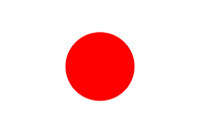add9 Chords / Music Theory Lesson
About add9 Chords
Before learning about the remaining sus chords, lets first take a look at the add9 (add ninth) which is commonly used in ballads, various genres, and will tie into a future article on tension chords.
It is a chord that is often used in arrangements using similar notes in chord progressions.
Though the number “9” may seem a little offputting at first, like the maj”7″ and m”7″, or sus”4″ that we have looked at until this point, it symbolizes it’s distance from the root.
Before hearing the chord, lets figure out what this 9 means.
We had previously looked at notes in the scale with relative number for each note.
(Ex:27. Scale degree names)
Though we have only seen up until 8 at this point, lets add in a second major scale and designate numbers to them.
For example, with a C major scale:
By doing this, we can see what note is given the number “9”.
As we can see, it is D for the C major scale.
By adding a 9th to a major triad, you can create an add9 chord.
✳︎ It is not usually called a major add 9th, and is commonly called simply add9th.
Thus, a Cadd9 is made up of the notes C E G D.
How an add9 Chord Sounds
First lets hear how the add9 chord sounds.
After the individual chord notes are played, the chord will play.
It is not as simple and bright as the major tirad, while not as nostalgic as the major 7th, and has a pure and straight sound. It is a very beautiful chord.
How to Write the add9 Chord
The add9 chord is often written as below:
In general this depiction works best.
- C add 9th = Cadd9
- F add 9th = Fadd9
You may see it written as Cadd2 in some rare occasions.
It may depend on the instrument used as well.
Lets take a closer look at the numbers.
2 and 9 are the same note D an octave apart.
When we learned about 4 note chords we took a look at putting together chords with an “opposite approach”. You can use that same thinking and consider the 9 as a whole step above the root as well.
Thoug it may seem far from the root, keeping in mind that it is the next note up makes it easy to figure out the note every time.
Supposedly there are different ways to use the 2 and 9 in music as well.
Minor add9
Lets take a look at the minor version as well.
You will often see a “m” or “-” placed before the word “add”.
If the half-step clash of the 2 ”M2nd” and b3 ”m3rd” are causing issues in the song, feel free to use the higher voicing.
You may feel this is an incredibly melloncholic chord upon hearing it.
(After the individual chord notes are played, the chord will play.)
Making an add9 Chord
We will take a look at Cadd9/Cmadd9 chords as an example and take a look at them on notation and the piano roll.
It is easy to memorize it by major triad +M9th.
Using the add9
Lets try using the add9 chord.
We will focus on connecting notes from other chords.
- Key=C major Am7→G→Fadd9

The top notes connect and create a smooth progression.
Using it with the II-V-I creates a fancy sound as well.
- Key=C major Dm7→G7→Cadd9
It creates a very distinct style of conclusion.
In addition, when using the 9th to make a melody stand out, you can use the add9 chord to help emphasize the melody as well.
When analyzing music, be sure to compare the chord progressions with the melody as well.
Article Writer: Kazuma Itoh

After moving to the USA at 18 years of age with a scholarship from Berklee, he completed a 4 year study focused on song writing and arranging there.
Using this knowledge, he works across a variety of fields from pop music, film music, and more.

























